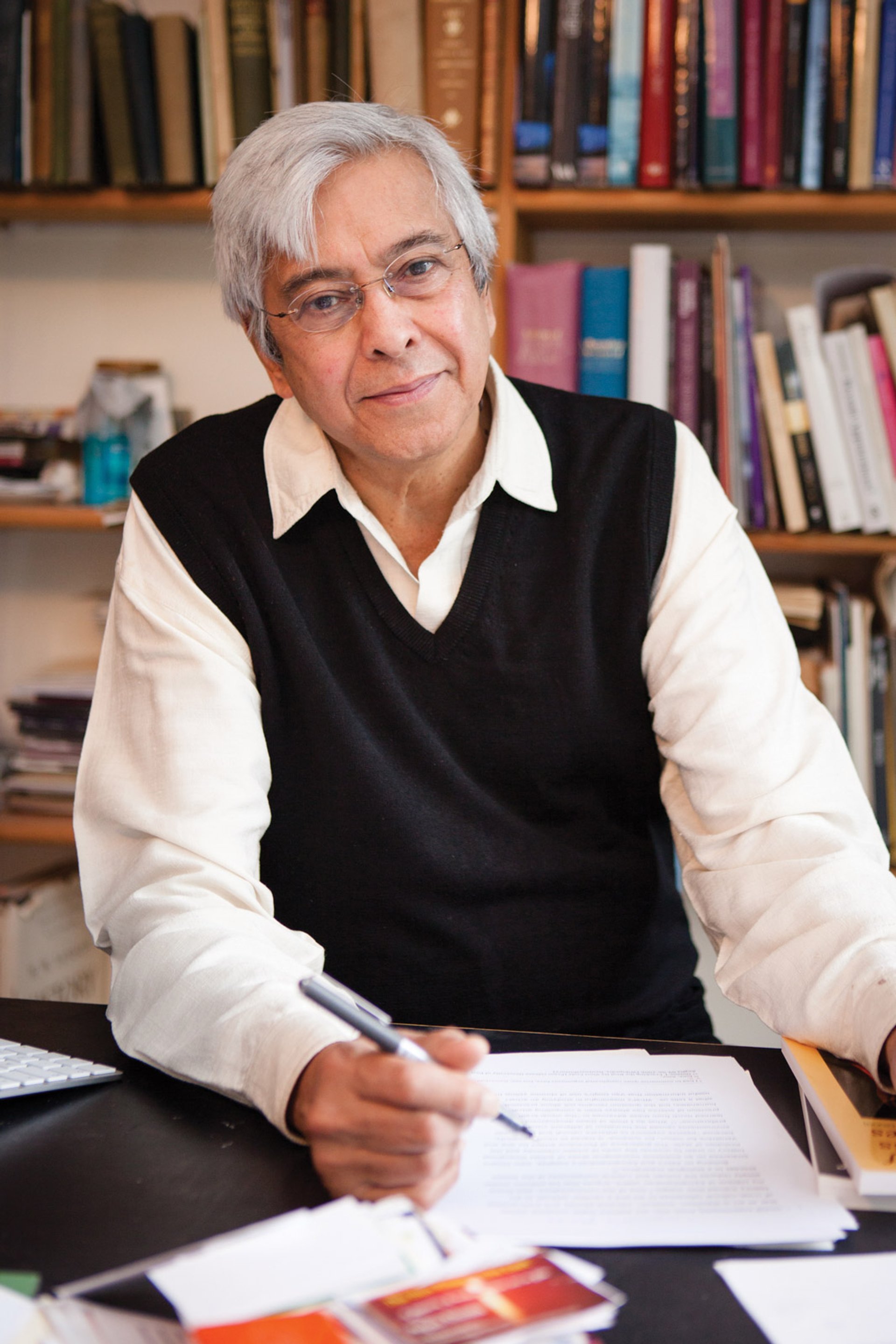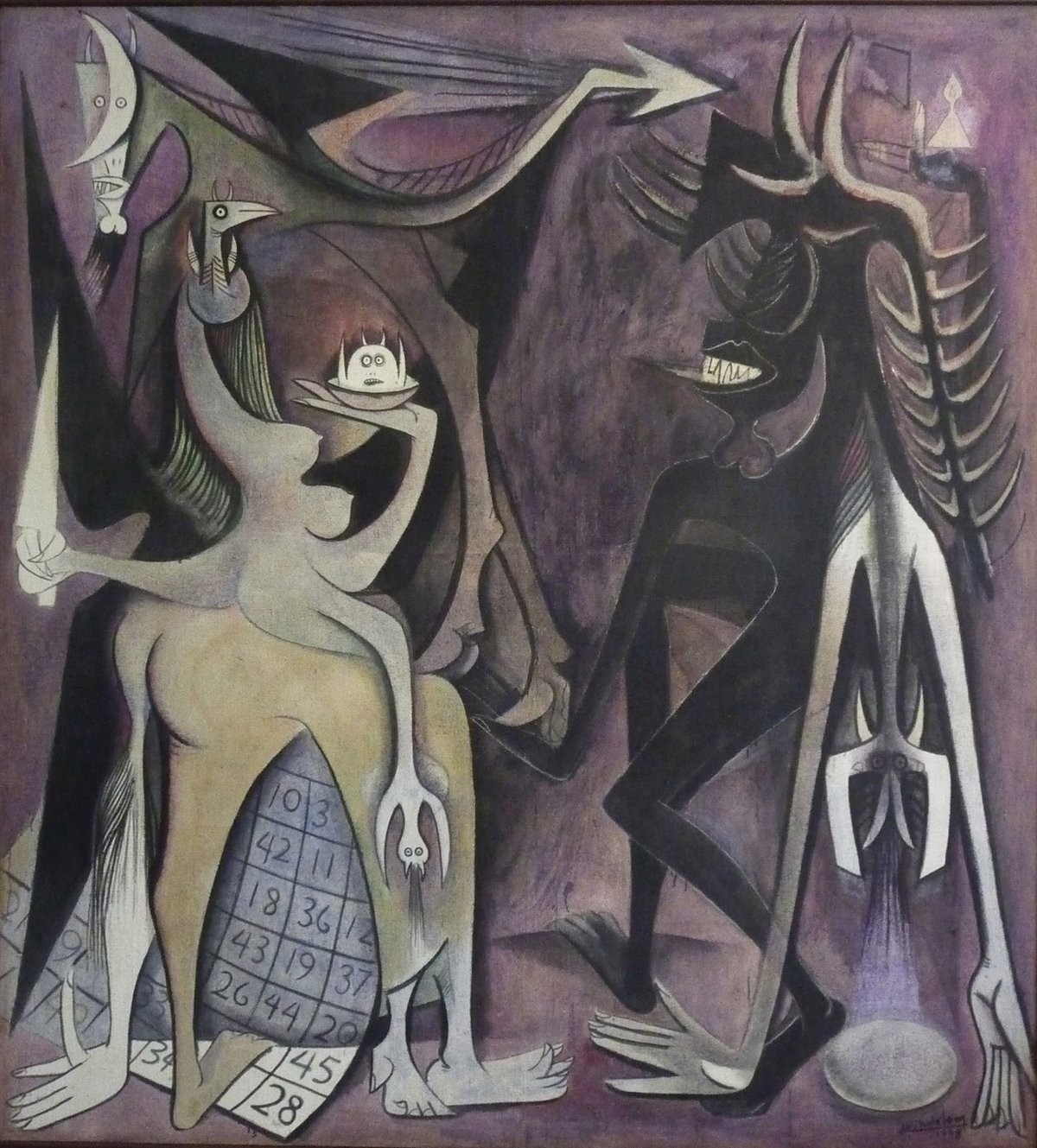Apropos the Martinican poet Aimé Césaire, Jean-Paul Sartre observed that Surrealism was snatched from the Europeans by “a Black who used it brilliantly as a tool of Universal Revolution”. This statement could be read as a parable for global Modernism. Not just Surrealism, but all Modernist movements demonstrated an ambivalent relationship with so-called primitive art, which acted as a shorthand for the art of Africa, the Americas, Asia and Oceania.
Primitivism, or the European fascination with the “primitive”, is essentially a Western construct in which the non-West plays a passive, subordinate, even subservient role. But what function did the primitive perform in the Western imagination? The crisis of the industrial age, which can be traced back to Enlightenment rationality, made 19th-century utopians long for the simplicity of premodern existence. Primitivism offered a trenchant critique of colonial-capitalist modernity and an alternative utopia, but it was riddled with inner tensions and contradictions. As the art historian Hal Foster has observed, the “avant-garde was also ambivalently critical: its partial identification with the primitive, however imaged problematically as dark, feminine and perverse, remained a partial disassociation from white, patriarchal, bourgeois society, and this disassociation should not be dismissed as insignificant”. The critical theorist Edward Said spoke of primitivism as “the age-old antetype of Europe... a fecund night out of which European rationality developed”.

Partha Mitter questions the agency of the “primitive”
In European art, Pablo Picasso’s Les Demoiselles d’Avignon (1907) marked a turning point, inspiring artists to embrace African sculpture as an antidote to classical taste. Among the avant-garde movements, Surrealism took on an even more radical position, challenging rationalism, the very foundation of the Western knowledge system. As André Breton’s Manifeste du surréalisme (Manifesto of Surrealism, 1924) acknowledges, Sigmund Freud’s legitimisation of dreams and the unconscious as a means to lay bare repressed sexuality and violence enabled the radical group to break out of the moribund constraints of Enlightenment reason and bourgeois morality.
But Western engagement with the primitive was always predicated on Western superiority. Freud’s own brilliant analysis of childhood was indebted to the evolutionary doctrine that represented the African as belonging to the childhood of humankind, its prerational stage. He was impressed with the French anthropologist Lucien Lévy-Bruhl, who put forward the theory of primitive mentality, which reached the conclusion that “the mental processes of ‘primitives’ do not coincide with those which we are accustomed to describe in men of our own type”.
The West, by imposing its own primitivist fantasies on Africans and their art, was party to the erasure of their realities. Behind unexamined formalist juxtapositions of the tribal and the modern lies the tacit denial of colonial violence. The position of Surrealism is more complex. Surrealists stormed the secure ramparts of Western civilisation, seeking to undermine its very foundations. They attempted to turn attention to the brutality of European colonialism in their 1931 protest exhibition La vérité sur les colonies (The truth about the colonies); Breton, Louis Aragon, Paul Eluard and their colleagues became implacable anti-imperialists. In 1937, Michel Leiris aimed at obliterating the difference between the European self and the so-called other. He transferred the anthropological practice of studying “primitive” rituals to the Spanish corrida (bullfight), exploring it as a transgressive mode operating against the normative social order.
"It is no accident that the greatest impulses towards new paths for Surrealism have been furnished by my greatest friend[s] of colour"
Primitivism had an obvious emancipatory function in the narrative of Modernism. But my question is, where is the agency of the “primitive” in this? Even Surrealists imagined that tribal art expressed emotional states directly, failing to consider it as a sophisticated art produced in its own ritual context. More importantly, where are contemporary Black Surrealists in the Modernist narrative? To quote Sartre:
“In [Aimé] Césaire, the great surrealist tradition is realised. Césaire’s originality lies in his having directed his powerful, concentrated anxiety as a negro, as one oppressed, as a militant individual, into this world [Surrealism] of the most destructive, free and metaphysical poetry at the moment when Eluard and Aragon were failing to give political content to their verse.”
Also missing from the established roster of great artists is Wifredo Lam, the Chinese African Surrealist painter from Cuba. Of the profound affinities between Surrealism and primitive thought, Breton said in 1945, it “is…no accident, but a sign of the times, that the greatest impulses towards new paths for Surrealism have been furnished by my greatest friend[s] of colour—Aimé Césaire in poetry and Wifredo Lam in painting”.
Lam himself insisted that his painting was “an act of decolonisation”. And yet, this major non-Western artist disappeared from the Modernist discourse after his death in 1982 and had to wait until 2015 for a major retrospective. Noting Lam’s absence from the Modernist canon, the curator Catherine David suggested that his work had occupied one of the most singular and paradoxical places in the history of global Modernism. This is because major non-Western artists, who have been consigned to the margins, suffer from what I have called the “Picasso manqué syndrome”. An outcome of the complex discourse on power, authority and hierarchy that long dominated the study of non-Western art, this term characterises the reductive criteria of influence imposed on all artists on the periphery in relation to the perceived centre; successful imitation became a form of aping, while imperfect imitation meant a failure of learning.
These artists, who have been tacitly or overtly dismissed as derivative, are viewed as trying to catch up with the Modernity of the Western metropolitan locus and the discourse surrounding its origins. In the 21st century, the time is long overdue to revise art history and reimagine Modernism, including Surrealism.
• ‘Surrealism and the Global Colonial Order’ by Partha Mitter, excerpted from Surrealism Beyond Borders edited by Stephanie D’Alessandro and Matthew Gale, Metropolitan Museum of Art, 384pp, $65 (hb) © The Met 2021. Reprinted by permission
• Surrealism Beyond Borders, Tate Modern, London, 24 February-29 August



